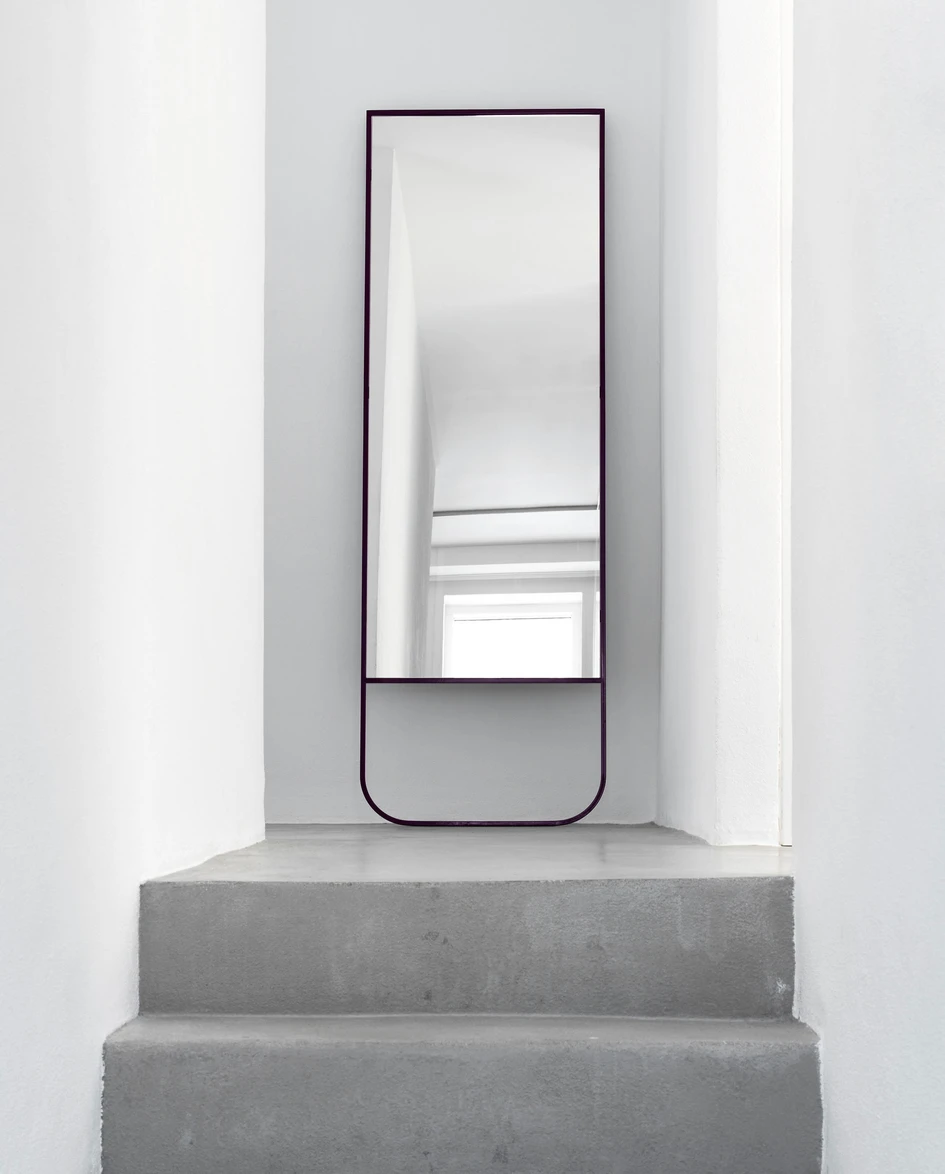Four questions to ask when choosing a mirror for the home
Choosing the right mirror can be as curiously confusing as falling through the looking glass. Here’s what to look for, when looking at mirrors.
September 6, 2022 | 10:00 pm CUT
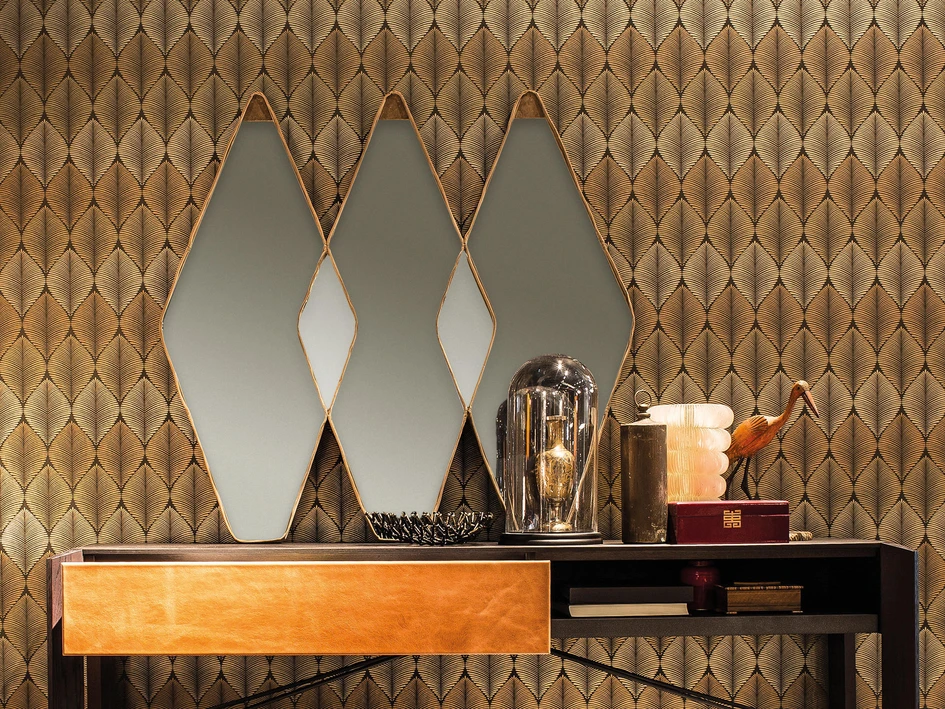
Arketipo’s 1920s-styled, velvet-wrapped Vanity Fair mirrors come as single rhombus shapes or as doubles and triples that share each other’s edges
Mirrors mirrors on the wall, but which is the fairest of them all?
The answer – much like a poorly cleaned mirror itself – is blurred. With different shapes, sizes and styles suiting different locations, functions and personalities, it’s impossible to judge. Mirrors can be used as points of self-reflection for dressing and beautifying, but also for multiplying light and space in naturally dark or narrow environments, or simply as strikingly decorative objects. Here are the right questions to ask when lost in a land of mirrors.
Why don’t some mirrors go on the wall?
Most mirrors are hung on the wall. Taking up little to no floor space, they can be positioned anywhere without disrupting low-height furniture. But while the Brothers Grimm preferred theirs that way, more contemporary living spaces with floor-standing mirrors offer a new angle.
Leaning floor mirrors might look like someone’s run out of Rawlplugs, but full-length options like TATI from ASPLUND give a more inclusive wide-angled reflection from head to toe. Short on space, however, then Deknudt Mirrors’ perpendicular Luna wall mirror gives simultaneous front and side views, while freestanding mirrors like LC 198 from Gervasoni is light and easy to move around, with rear hooks to line up alternative outfits.
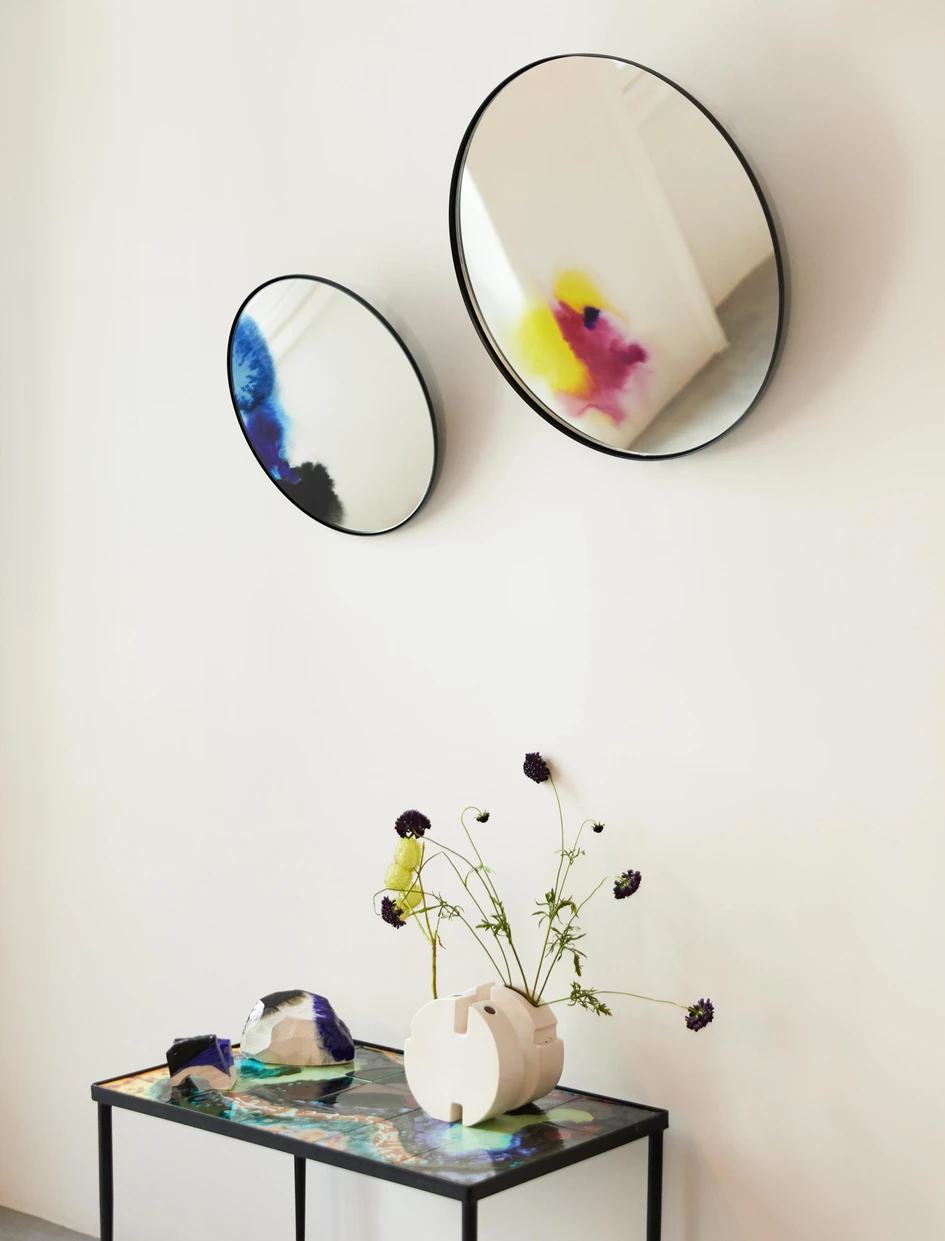

Petite Friture’s colourful Francis mirrors (top), Arketipo’s art deco Vanity Fair rhombus mirrors (middle) and Tuttobene’s modernist triangular Transience mirror (bottom)
Which shape mirror suits each space?
Full-length mirrors help dressing rooms to give a straight picture, but a mirror’s shape is dictated by its surroundings, as well as function. In a space where final checks are made before leaving the house, long eye-level hallway mirrors like District Eight’s clean and uncomplicated Hallway Mirror increase light and space in this cramped area.
In living spaces, meanwhile, the straight lines of a square mirror often appear above straight-edged furniture like mantlepieces and dining tables. Too many squares, however, can dampen a room’s personality, so round mirrors like Petite Friture’s Francis mirror, with its burst of creativity and colour, offer a contrasting shape.
Full-length mirrors help dressing rooms to give a straight picture, but a mirror’s shape is dictated by its surroundings, as well as function
For those who really wish to skew things up, there are plenty of uncommonly shaped mirrors on the market, too. Like the 20’s styled Vanity Fair mirror, by Arketipo, covering its art-deco rhombuses in velvet, or the more modernist triangular Transience mirror from Tuttobene, where the decorative use of shape and colour welcomingly overtakes function.

Meridiani’s over-sized Birk mirror dramatically imposes itself on spaces (top), while multiple-mirror arrangements like Hawaii from Cattelan Italia (bottom) expand to fit
How big should a mirror be?
A good rule is to select a mirror around two-thirds the size of the furniture underneath it. But rules are meant to be broken, aren’t they? In dark areas, covering an entire wall or section in reflective surfacing like 3M’s Fasara Glass Finish mirror covering multiplies both light and space.
A good rule is to select a mirror around two-thirds the size of the furniture underneath it. But rules are meant to be broken
Arrangements of multiple smaller mirrors can still bring large-scale reflective function, however, only with an additional decorative side. For example, Cattelan Italia’s Hawaii mirror series, based on the US state’s major islands, seems to be slowly emerging from the stillness of the Pacific.
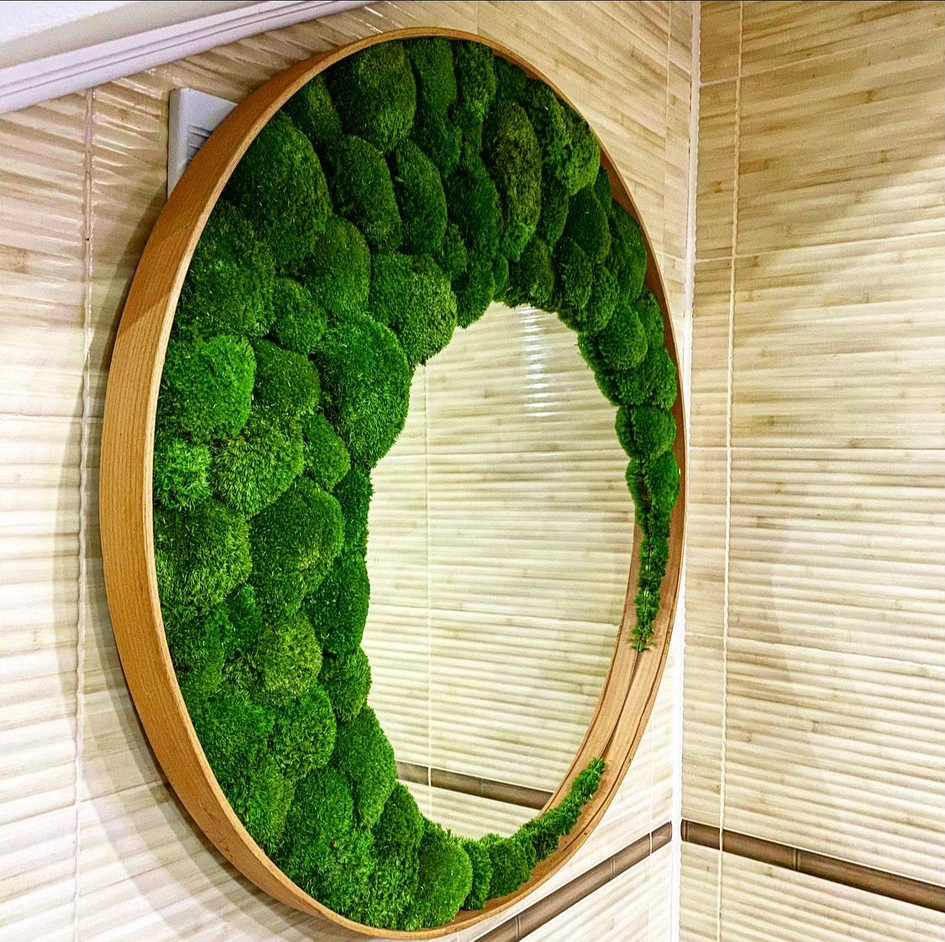
Moroso’s Ego Stud combines black steel and leather for a stylised look (top) and Ekomoss’ Mirror with Ball Moss adds softer textures with warm wood encircling a vertical miniature landscape (bottom)
What’s the best material for a mirror frame?
As a mirror’s main creative outlet, choosing the right frame material is crucial to blending it harmoniously with its setting. Thin, black frames are minimalist, while those in light woods offer a more wholesome, Scandinavian version of minimalism. Thicker or darker wood gives a rustic ambience, while weathered metal has an industrial feel. Mirror frames with an additional textural element, however, manage to both catch and hold attention.
Diesel with Moroso’s Ego Stud mirror mixes black steel, leather and buckles for an elegantly brooding look, while Ekomoss’ Mirror with Ball Moss represents a more positive biophilic message, backing it up with a wood-wrapped miniature treescape to stare into and search for life.
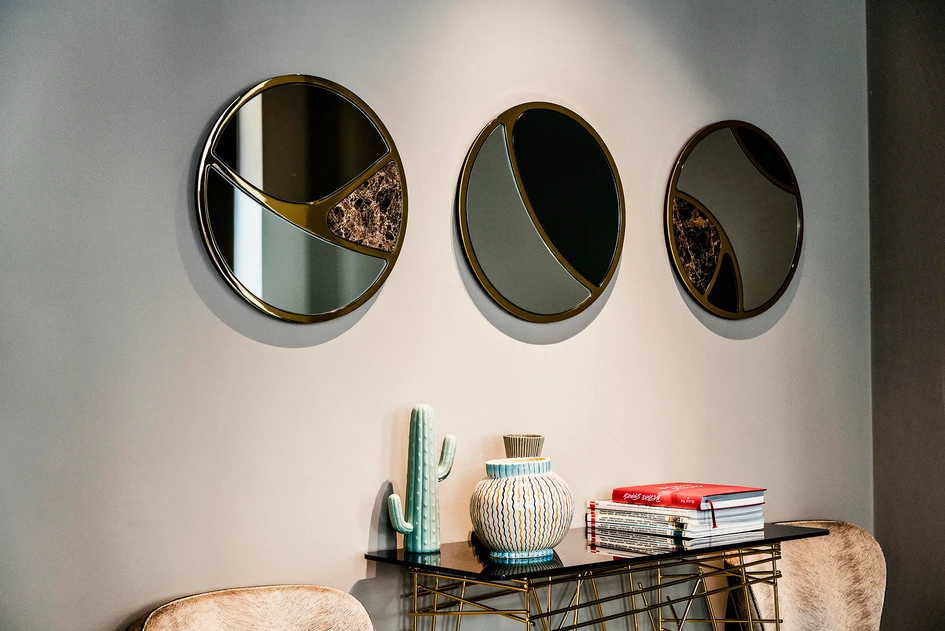
Sovet’s Visual collection offers a choice of mirror finishes for a captivating look (top), while Black Tie’s Delta trio add marble and gold interior lining (bottom)
But modern mirrors don’t just use their frames to set them apart. The brass-or mocha-finished aluminium frames of Sovet’s Visual mirrors create unforgettable walls with various mirror tints including gold, rose, bronze and smoked, as well as clear. The Delta mirror from Black Tie, meanwhile, splits curved arrangements of bronzed, smoked and clear mirror glass and Emperador marble with gold-finished leading.
Project Gallery
















